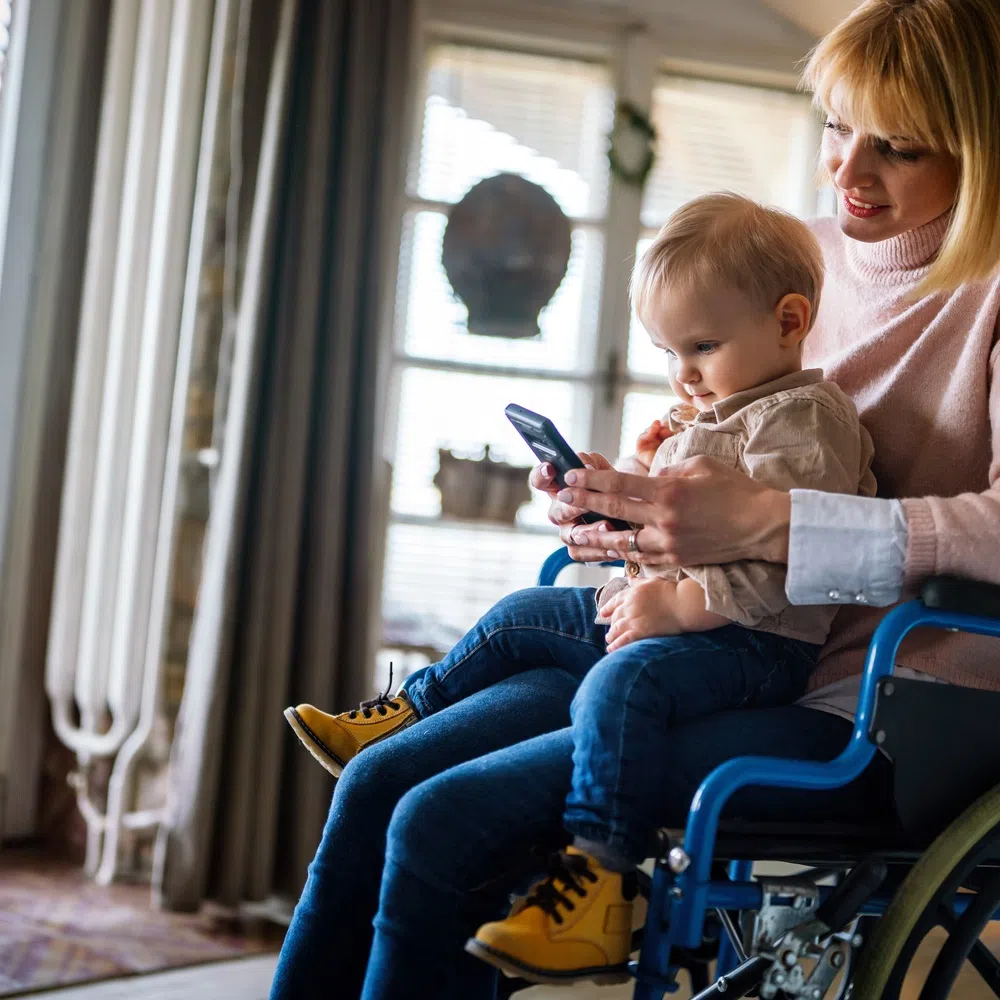Getting ready for a baby brings excitement, nerves, and a lot of planning. If you’re a mom with a disability, creating a nursery that works for your needs makes those early months smoother and more enjoyable. You don’t need a huge budget or a professional designer—just a few smart adjustments to make the space more accessible and comfortable for both you and your baby. Here’s how moms with disabilities can create an accessible nursery.
Focus on Reachable Storage
Start by thinking about how you move through the room. If you use a wheelchair or other mobility device, place storage within easy reach. Low shelves, baskets, and drawer organizers keep baby supplies close and easily accessible. Skip tall changing tables and go with a sturdy surface that matches your seated height. Keep diapers, wipes, and onesies in the same area so you don’t need to move around while changing your baby.
You can also use open storage, like cubbies or bins without lids. That way, you avoid fumbling with drawers or containers while holding your baby or using one hand. Hang hooks at a lower level for items like diaper bags or lightweight baby carriers, and label everything clearly so others can assist without confusion.
Choose the Right Furniture
Furniture should match your physical needs and make your daily routines easier. Look for a crib with sliding or drop-down sides that give you front access, especially if lifting over a high rail feels difficult. There are cribs designed specifically for mothers with disabilities who want to create an accessible nursery. The Gertie Crib is one of them.
Rocking chairs and gliders can look nice, but not all of them are suitable for moms with disabilities. Try different styles and pick one that supports your body and helps you transfer safely. Add a small table next to your seat to hold bottles, pacifiers, or your phone, so you don’t need to get up once you settle in for feeding or snuggle time.
Keep the Layout Siple
Avoid clutter and leave enough open space to move freely through the room. If you use a wheelchair, walker, or cane, test the layout before finalizing it. Make wide paths between furniture, and avoid rugs that bunch or slide. Place the crib near the door so you can reach your baby quickly without having to navigate the entire room.
Consider using voice-activated lights or baby monitors with visual alerts for added flexibility during nighttime feedings or naps. Small upgrades like these help you feel more in control of the space and make those early days a little easier.
Make the Nursery Work for You
Navigating parenthood when you have a disability brings unique challenges, but a well-thought-out nursery can support your daily routine and reduce stress. Adapt your space in a way that fits your abilities and your lifestyle. Focus on what helps you feel confident, comfortable, and ready to care for your baby in your own way. You don’t need perfection—just a setup that works for you and your growing family.
Image Credentials: NDABCREATIVITY, # 463464967




